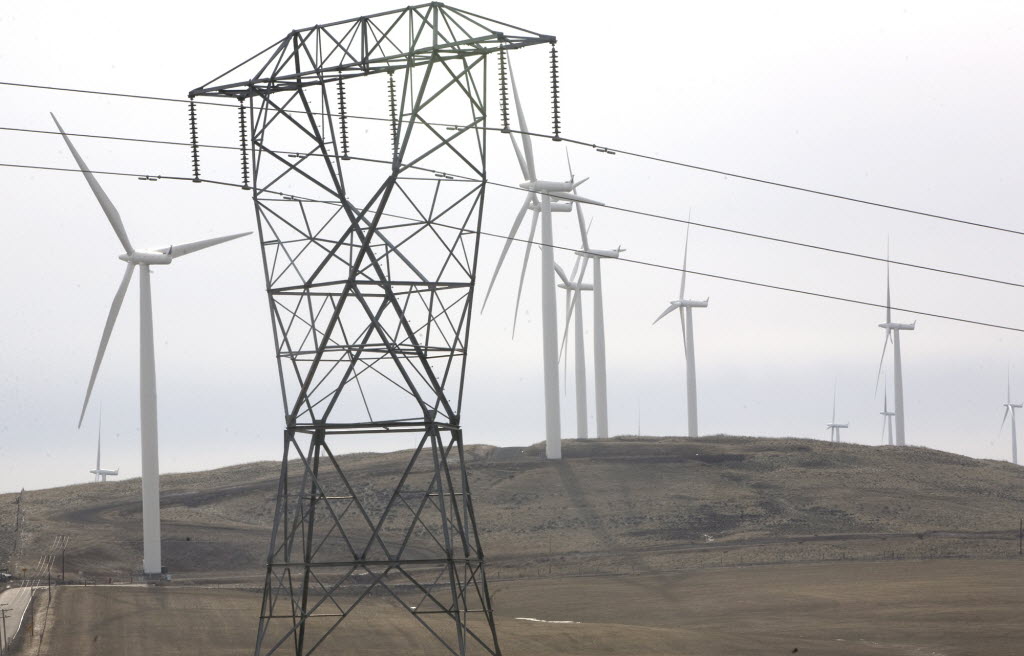BPA has published its Draft Environmental Impact Statement at:
http://bpa.gov/Projects/Projects/I-5/Pages/Draft-EIS.aspx
The Bonneville Power Administration on Tuesday announced its preferred route for a planned transmission line through Clark and Cowlitz counties, opting to steer clear of the Vancouver urban area.
But the proposed Central Alternative would still pass near hundreds of homes, including many in east Clark County, doing little to alleviate residents’ worries in those areas.
BPA spokesman Doug Johnson characterized the decision as a balance. Of four possible routes for the line, the preferred option doesn’t affect the smallest number of people. It’s not the cheapest, either. But it achieves the agency’s goals while limiting many impacts to property and the environment, he said.
“It really looks like the best of the alternatives we were considering,” Johnson said.
The selection of a preferred route doesn’t eliminate the others on the table. But it does indicate which direction BPA leaders are leaning at this point, Johnson said.
BPA first floated the transmission line in 2009 as a way to ease a strained Northwest power grid and support growing energy demands across the region. The project would put a 500-kilovolt line from Castle Rock to Troutdale, Ore., connecting new substations in those cities. All four of the routes BPA has proposed would cross the Columbia River at Camas.
The Central route — detailed in a nearly 2,000-page Draft Environmental Impact Statement, also released Tuesday — enters Clark County near Merwin Dam. It continues east from there, then turns south before snaking mostly to the east of Yacolt and Hockinson. The route enters the Camas-Washougal area from the north.
The entire 79-mile line is estimated to cost $459 million, according to BPA. An earlier BPA analysis found it crosses about 48 miles of private land.
Not everyone was pleased with the preferred route. The controversial project has drawn the formation of opposition groups and protests from citizens with property and health concerns, many of whom maintained Tuesday that there’s still a better path forward.
Camas Mayor Scott Higgins called the announcement a “mixed bag” for his city. Leaders are “thrilled” the preferred route didn’t include a proposed segment that cuts through a newly annexed portion of north Camas. That would have delivered a major blow to the city’s economic hopes there, Higgins said.
“We are so focused on economic development in Camas,” he said. “Anything we saw as a threat to that, we were laser-intense on that.”
The Camas City Council earlier this year asked BPA to consider pushing the line outside of Camas, or look at an underground possibility. That didn’t happen. The council will decide as soon as next week whether it wants to formally weigh in further, Higgins said.
“We knew the cards were stacked against us,” he said. “It looked as though the pre-conceived notion was to go through Camas.”
That’s still a concern for property owners in the area, said Terry Constance. He was among the citizen advocates who pushed for a route farther north and east than any of BPA’s four options.
“If there is a single home, a single person impacted by this, we’d like to see that avoided,” Constance said. “If there’s some impact to some people, it’s just not acceptable.”
The Central route passes within 500 feet of 327 homes, according to BPA. The West route toward Vancouver, by comparison, would put more than 3,000 homes within that range, though the line would be built mostly on existing BPA right of way. That was the least expensive of BPA’s four alternatives.
In a released statement, another citizen group called BPA’s preferred choice “the political path of least resistance.” The Central alternative still targets hundreds of rural private property owners, leading many to lose land and resources as BPA clears the way for a high-powered line, according to A Better Way for BPA. The group indicated Tuesday it will continue to oppose the preferred alternative that “makes absolutely no sense.”
Much of the Central route crosses land held by large landowners such as Weyerhaeuser, Longview Timber, PacifiCorp and the state Department of Natural Resources, according to BPA. It also aims to minimize impacts to wetlands and waterways, the federal power marketing agency said.
BPA will accept public comment on the Draft Environmental Impact Statement until March 1, 2013. A series of drop-in sessions and public meetings is planned for December and January.
The agency expects to release the project’s Final Environmental Impact Statement in 2014. If it decides to go ahead with the transmission line, construction could begin as soon as 2015 with power moving in 2018.
Eric Florip: 360-735-4541; http://twitter.com/col_enviro; eric.florip@columbian.com.




